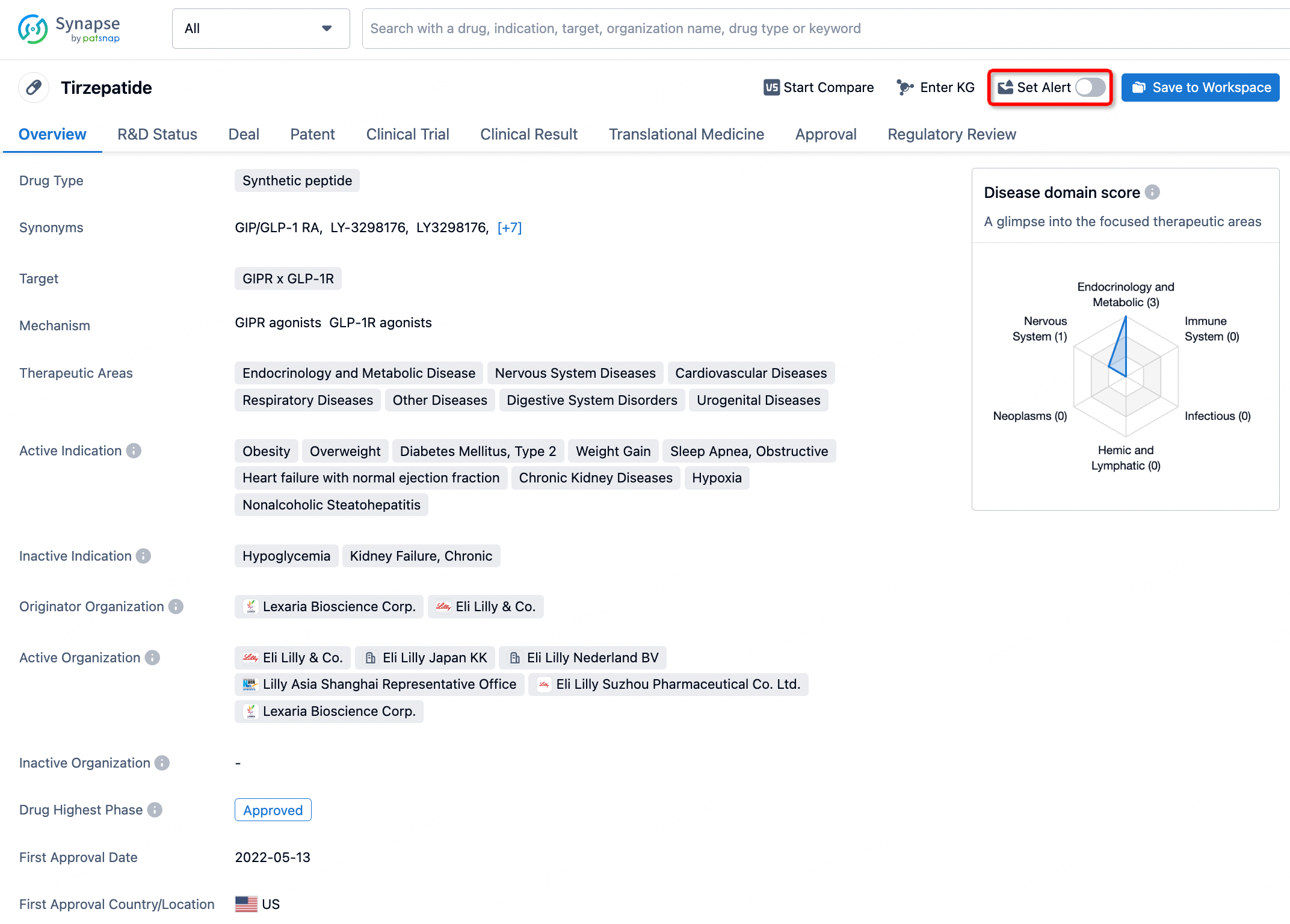Request Demo
What is the mechanism of Ponesimod?
17 July 2024
Ponesimod is an oral medication that has garnered attention in the treatment of multiple sclerosis (MS), a chronic autoimmune disease affecting the central nervous system (CNS). Understanding the mechanism of Ponesimod reveals how it contributes to managing the symptoms and progression of MS.
Ponesimod is a selective sphingosine-1-phosphate receptor 1 (S1P1) modulator. This specificity is crucial because S1P receptors are involved in a variety of cellular processes, including immune cell trafficking. The mechanism of action of Ponesimod can be broken down into several key steps, each contributing to its therapeutic effects:
1. **Selective Binding to S1P1 Receptors**: Ponesimod selectively binds to the S1P1 receptors on the surface of lymphocytes, a type of white blood cell. S1P1 receptors play a pivotal role in regulating the movement of these immune cells from lymphoid tissues into the bloodstream.
2. **Internalization and Degradation of S1P1 Receptors**: Upon binding to the S1P1 receptors, Ponesimod induces internalization and subsequent degradation of these receptors. This process prevents lymphocytes from responding to sphingosine-1-phosphate (S1P), a signaling molecule that normally promotes their egress from lymphoid tissues.
3. **Reduction in Lymphocyte Egress**: With the S1P1 receptors degraded, lymphocytes are unable to exit the lymphoid tissues and enter the bloodstream effectively. This results in a significant reduction in the number of circulating lymphocytes. Specifically, it decreases the migration of autoreactive lymphocytes to the CNS, where they can cause inflammation and damage characteristic of MS.
4. **Immunomodulation**: By reducing the population of autoreactive lymphocytes in the bloodstream, Ponesimod exerts an immunomodulatory effect. This action helps to mitigate the autoimmune attack on the myelin sheath—the protective covering of nerve fibers in the CNS. Protecting this sheath is vital to preserving nerve function and slowing the progression of MS.
5. **Clinical Benefits**: The ultimate clinical benefits of Ponesimod in MS patients stem from its ability to reduce neuroinflammation and the associated damage to the CNS. This reduction in damage translates to fewer relapses, a slower progression of physical disability, and an improvement in overall quality of life for individuals with MS.
In conclusion, the mechanism of Ponesimod involves selective modulation of the S1P1 receptors, leading to reduced lymphocyte circulation and subsequent immunomodulation. By limiting the autoimmune response that targets the CNS, Ponesimod provides significant therapeutic benefits to individuals with multiple sclerosis, making it a valuable option in the management of this chronic disease.
Ponesimod is a selective sphingosine-1-phosphate receptor 1 (S1P1) modulator. This specificity is crucial because S1P receptors are involved in a variety of cellular processes, including immune cell trafficking. The mechanism of action of Ponesimod can be broken down into several key steps, each contributing to its therapeutic effects:
1. **Selective Binding to S1P1 Receptors**: Ponesimod selectively binds to the S1P1 receptors on the surface of lymphocytes, a type of white blood cell. S1P1 receptors play a pivotal role in regulating the movement of these immune cells from lymphoid tissues into the bloodstream.
2. **Internalization and Degradation of S1P1 Receptors**: Upon binding to the S1P1 receptors, Ponesimod induces internalization and subsequent degradation of these receptors. This process prevents lymphocytes from responding to sphingosine-1-phosphate (S1P), a signaling molecule that normally promotes their egress from lymphoid tissues.
3. **Reduction in Lymphocyte Egress**: With the S1P1 receptors degraded, lymphocytes are unable to exit the lymphoid tissues and enter the bloodstream effectively. This results in a significant reduction in the number of circulating lymphocytes. Specifically, it decreases the migration of autoreactive lymphocytes to the CNS, where they can cause inflammation and damage characteristic of MS.
4. **Immunomodulation**: By reducing the population of autoreactive lymphocytes in the bloodstream, Ponesimod exerts an immunomodulatory effect. This action helps to mitigate the autoimmune attack on the myelin sheath—the protective covering of nerve fibers in the CNS. Protecting this sheath is vital to preserving nerve function and slowing the progression of MS.
5. **Clinical Benefits**: The ultimate clinical benefits of Ponesimod in MS patients stem from its ability to reduce neuroinflammation and the associated damage to the CNS. This reduction in damage translates to fewer relapses, a slower progression of physical disability, and an improvement in overall quality of life for individuals with MS.
In conclusion, the mechanism of Ponesimod involves selective modulation of the S1P1 receptors, leading to reduced lymphocyte circulation and subsequent immunomodulation. By limiting the autoimmune response that targets the CNS, Ponesimod provides significant therapeutic benefits to individuals with multiple sclerosis, making it a valuable option in the management of this chronic disease.
How to obtain the latest development progress of all drugs?
In the Synapse database, you can stay updated on the latest research and development advances of all drugs. This service is accessible anytime and anywhere, with updates available daily or weekly. Use the "Set Alert" function to stay informed. Click on the image below to embark on a brand new journey of drug discovery!
AI Agents Built for Biopharma Breakthroughs
Accelerate discovery. Empower decisions. Transform outcomes.
Get started for free today!
Accelerate Strategic R&D decision making with Synapse, PatSnap’s AI-powered Connected Innovation Intelligence Platform Built for Life Sciences Professionals.
Start your data trial now!
Synapse data is also accessible to external entities via APIs or data packages. Empower better decisions with the latest in pharmaceutical intelligence.


